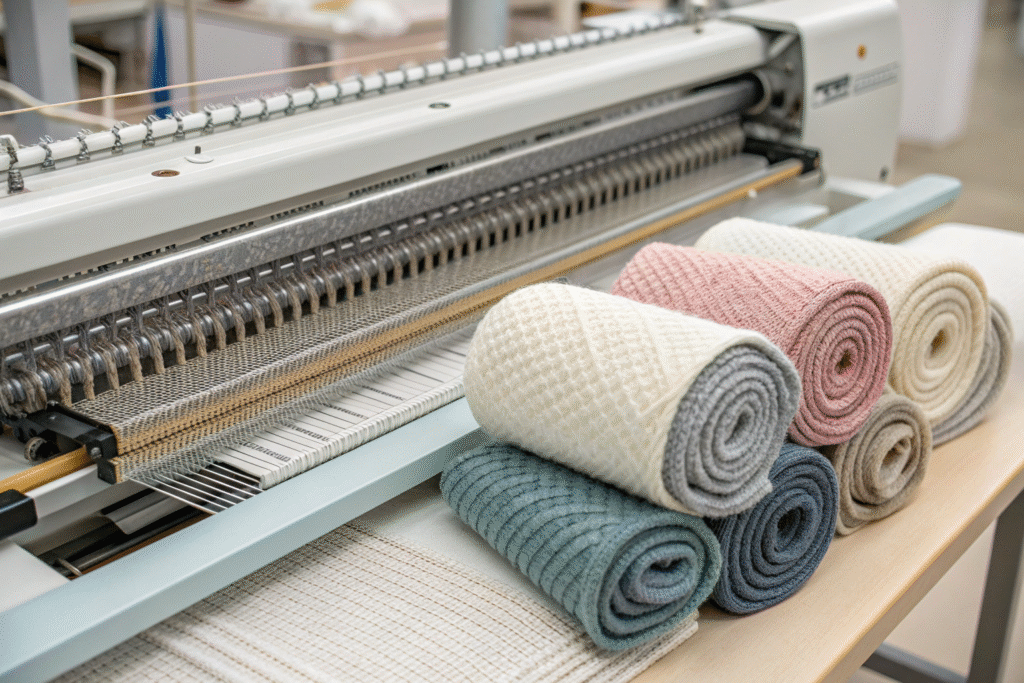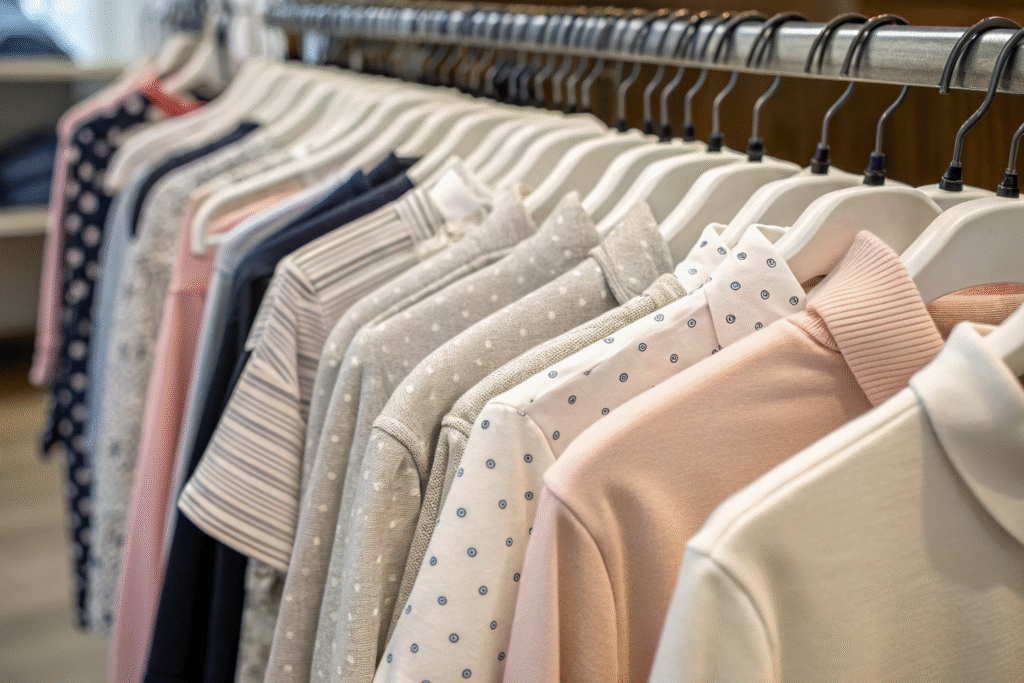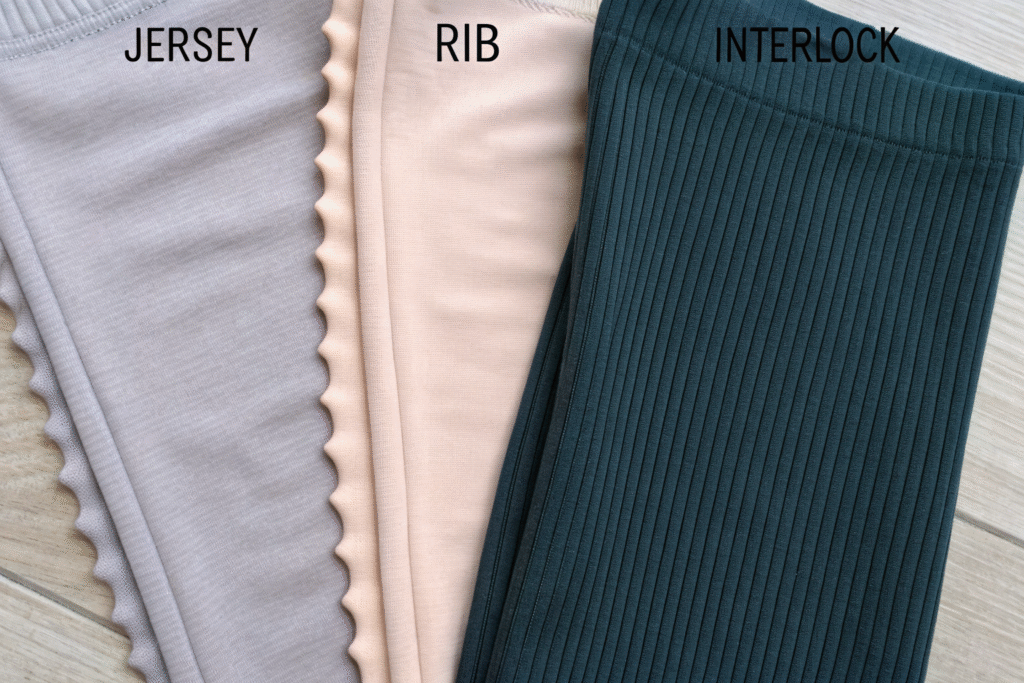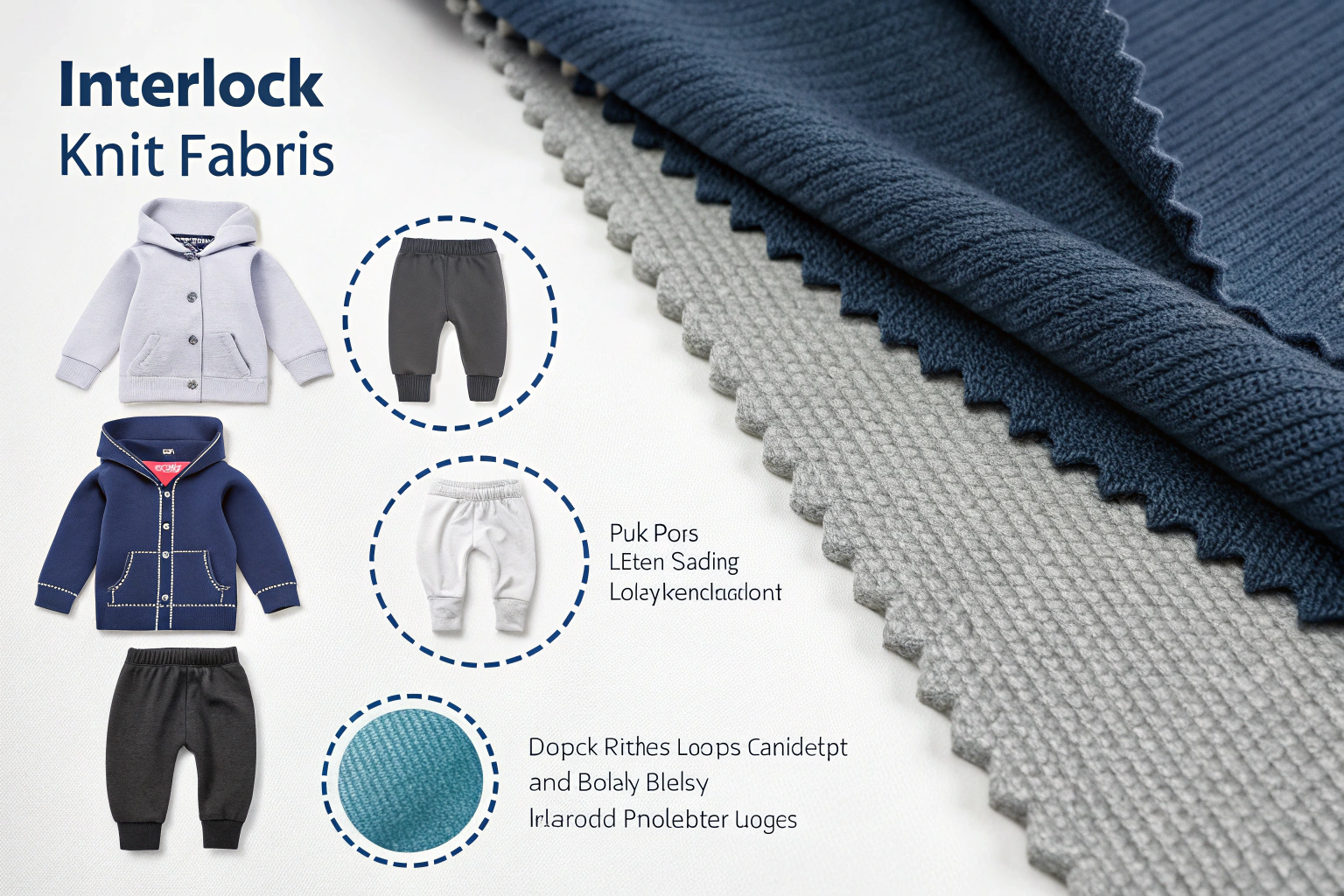When apparel buyers, sourcing managers, or designers compare knit fabrics, one term that often sparks curiosity is interlock knit. It is sometimes mistaken for jersey because of its smoothness and stretch, yet its construction and performance make it stand out as a premium option. Choosing the right knit fabric directly affects how garments look, feel, and last, which is why interlock is frequently selected for higher-quality apparel lines.
In short: Interlock knit is a double-knit fabric created on two needle beds, producing a fabric that is thicker, smoother, and stronger than jersey. It is ideal for products where softness, durability, and shape stability are critical—such as polos, babywear, activewear, and sleepwear.
From my own textile production experience, I’ve seen interlock become a go-to for international buyers who want to differentiate their products from mass-market basics. Let’s explore the structure, uses, and market benefits in depth.
What is Interlock Knit?
Interlock knit is produced using two sets of needles on a circular knitting machine, with stitches that interlock together in a symmetrical structure. Unlike single jersey, which is made of a single row of loops, interlock consists of two layers tightly connected. This results in a double-faced fabric where both sides look identical, smooth, and refined.

What makes interlock different?
- Thickness: Interlock is denser than jersey, typically ranging from 180 to 300 GSM. A 250 GSM interlock polo shirt feels noticeably weightier than a 160 GSM jersey tee, giving it a premium hand feel.
- Softness: The interlocked loops create a silky surface that feels gentle against the skin, making it highly suitable for direct contact garments like baby onesies or underwear.
- Stretch: Interlock stretches well across the width but has limited vertical stretch, which helps garments keep their shape after repeated washing.
- Shape Retention: Unlike jersey, which curls at the edges when cut, interlock fabric lies flat, making it easier to cut, sew, and finish in large-scale production.
According to Textile School, interlock is considered the most stable among knit fabrics, combining the comfort of knits with the structural reliability of woven fabrics.
When Should You Use Interlock Knit?
Because interlock balances softness, density, and durability, it serves multiple market needs across apparel and textiles.

Everyday Apparel
Interlock is a favorite for premium polos and T-shirts. For example, many European brands specify 200–220 GSM interlock cotton for polos because it gives shirts body and structure, unlike a lightweight jersey that may cling or lose shape. Dresses and skirts made from 240 GSM cotton interlock also drape well without being see-through, offering modesty and comfort.
Activewear & Loungewear
Polyester/spandex interlock blends are common in sportswear and yoga apparel. A 250 GSM polyester/spandex interlock legging provides 4-way stretch while resisting pilling, making it suitable for high-performance activities. At the same time, cotton interlock pajamas at 180–200 GSM deliver warmth and breathability, ideal for nightwear in both winter and transitional seasons.
Baby & Children’s Clothing
One of interlock’s most popular uses is in babywear. Because it is soft, non-abrasive, and breathable, it is safe for sensitive skin. Many baby bodysuits and onesies are made from 100% organic cotton interlock at 190–210 GSM. This fabric withstands repeated machine washing while remaining gentle, a key concern for parents.
Home Textiles & Accessories
Interlock also finds use in lightweight blankets, pillow covers, and sleep masks. A 220 GSM cotton interlock blanket offers warmth without bulk, making it perfect for spring and autumn. Unlike fleece, it does not trap excessive heat, giving a breathable yet cozy experience.
Interlock vs Jersey vs Rib
Though interlock, jersey, and rib are all knitted fabrics, they behave differently in both construction and use cases.
| Feature | Interlock Knit | Jersey Knit | Rib Knit |
|---|---|---|---|
| Structure | Double-knit, interlocked layers | Single-knit, one layer | Alternating knit & purl stitches |
| Surface | Smooth on both sides | Smooth front, textured back | Ribbed vertical ridges |
| Thickness | Medium to heavy (180–300 GSM) | Light to medium (120–200 GSM) | Variable (can be very elastic) |
| Stability | Holds shape, no curling at edges | May curl at edges | Highly elastic, form-fitting |
| Best for | Polos, babywear, leggings, pajamas | Casual tees, lightweight clothing | Cuffs, collars, fitted tops |
👉 Example: A 160 GSM jersey tee might feel casual and drapey, but it can stretch out of shape after many washes. A 220 GSM interlock polo retains its body and structure, even after 50+ wash cycles. Meanwhile, rib knit is excellent for trims, cuffs, and waistbands because of its elasticity.

Why Buyers Choose Interlock Knit
Interlock knit has established itself as a preferred option for premium buyers across the U.S. and Europe.
- Consistency in bulk orders: Because interlock fabric doesn’t curl or distort, factories cut it efficiently, reducing waste by up to 5% compared to jersey.
- Premium appearance: A 220 GSM interlock cotton polo offers a structured look, which is why global brands like Lacoste and Ralph Lauren rely on interlock for their high-end polo lines.
- Performance blends: Polyester/spandex interlock fabrics are widely used by sportswear companies like Nike and Adidas for leggings, compression tops, and yoga apparel, where both durability and comfort are key.
As Sewport highlights, interlock knit has become a cornerstone in the “premium basics” market because it gives everyday items a more luxurious look and feel, helping brands position themselves above budget competitors.
Conclusion
Interlock knit bridges the gap between casual jersey and technical rib fabrics, offering softness, structure, and long-lasting stability. Its uses span from premium polos and baby onesies to yoga leggings and lightweight blankets. Unlike jersey, it doesn’t lose shape, and unlike rib, it offers a smooth, polished finish suitable for a wide range of apparel.
For buyers, choosing interlock means garments that feel more substantial, last longer, and look refined. For manufacturers, it simplifies cutting and sewing, ensuring smoother production.
At Shanghai Fumao, we produce interlock fabrics in cotton, polyester, and blended compositions, customizable from 160 GSM lightweight options to 300 GSM heavy knits. Whether you are developing an organic babywear collection for Europe or premium polo shirts for the U.S. market, we provide professional QC, global logistics, and seamless supply chain management. Contact our Business Director Elaine at elaine@fumaoclothing.com today to co-develop interlock knit fabrics tailored to your brand’s market positioning.










